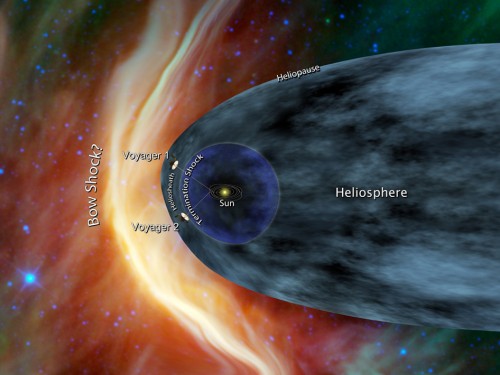Voyager I, the space probe launched 35 years ago, has gone farther than any probe before, and is
still communicating with earth. Soon it will be completely free from the influence of our Sun -in other words, it is leaving the solar system.
It’s hard to overstate how wild an accomplishment this
would be: A machine, built here on Earth by the brain- and handiwork of
humans, has sailed from Florida, out of Earth’s orbit, beyond Mars,
beyond the gas giants of Jupiter and Saturn, and may now have left the
heliosphere — tiny dot in the universe beholden to our sun. Had it
really happened? How would we know?
We’re not quite there yet, Voyager’s project scientist and former
head of NASA’s Jet Propulsion Lab, Edward Stone, told me. The spacecraft
is on its way out — “it’s leaving the solar system” — but we don’t know
how far it has to go or what that transition to interstellar space will
look like.
Voyager launched in 1977. Today, Voyager I is about 121 astronomical
units away (one astronomical unit is equal to the rough distance from
the Sun to the Earth). That is so far that it takes 16 hours for the
radio signals it transmits to reach us. (Voyager II is about 22
astronomical units — approximately seven years — behind.) It is
traveling at about 17 kilometers per second (38,000 miles per hour),
propelled by the slingshot effect from flying by Jupiter and Saturn.
(“It’s well above escape velocity,” Stone said.) The spacecraft’s
cameras have been turned off since 1990, when it took the pictures for
the famous Family Portrait mosaic that captures the planets as they
appeared as Voyager I looked back over the solar system it had traveled
across.
Scientists are monitoring certain cosmic ray particles hitting
Voyager, the kind that do not easily enter the heliosphere, to monitor
its progress. Read more about it at the
Atlantic.


No comments:
Post a Comment